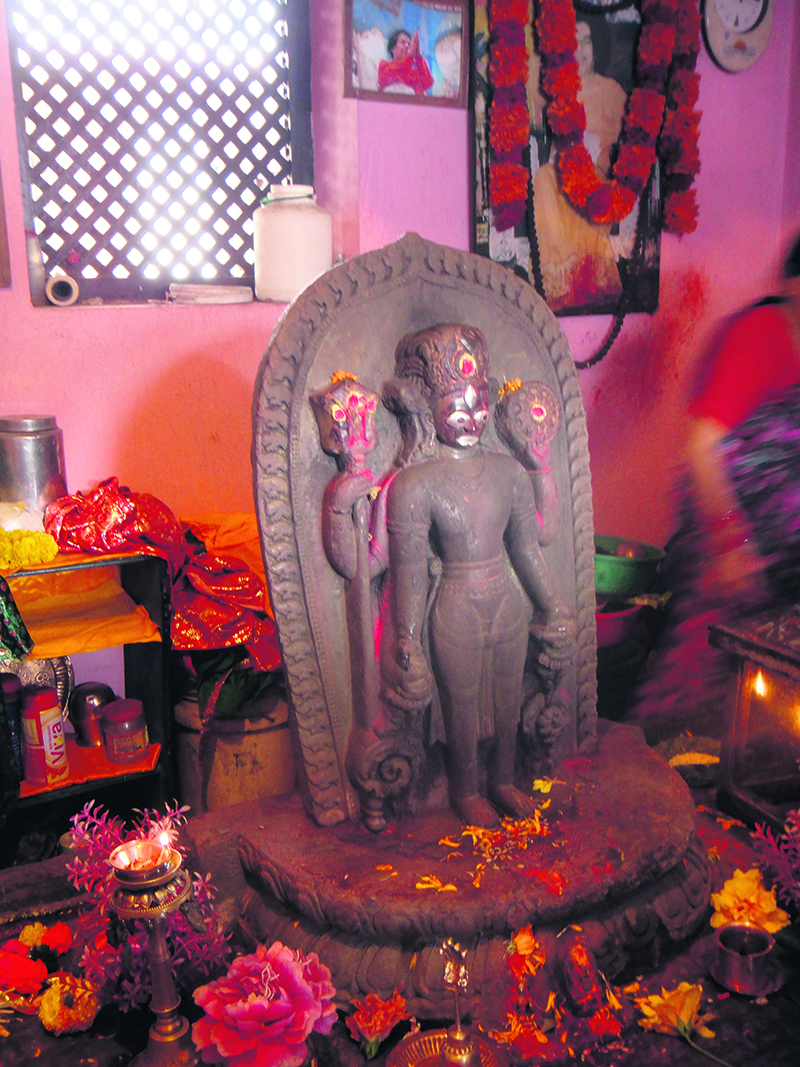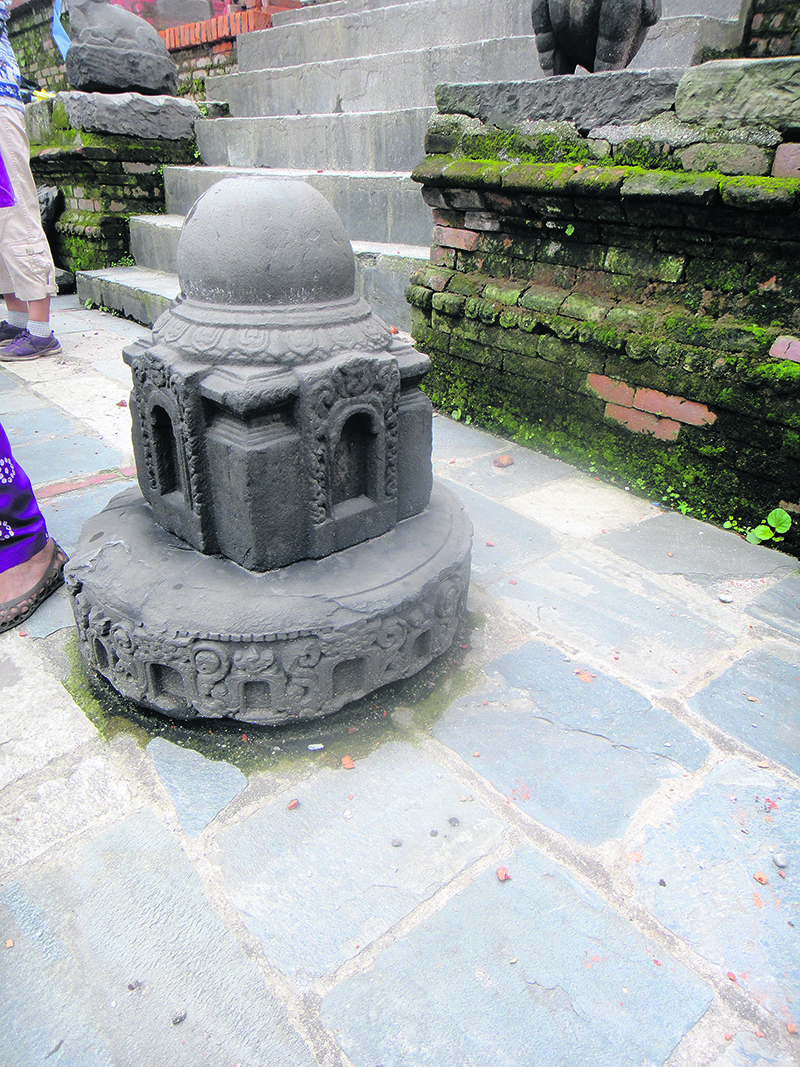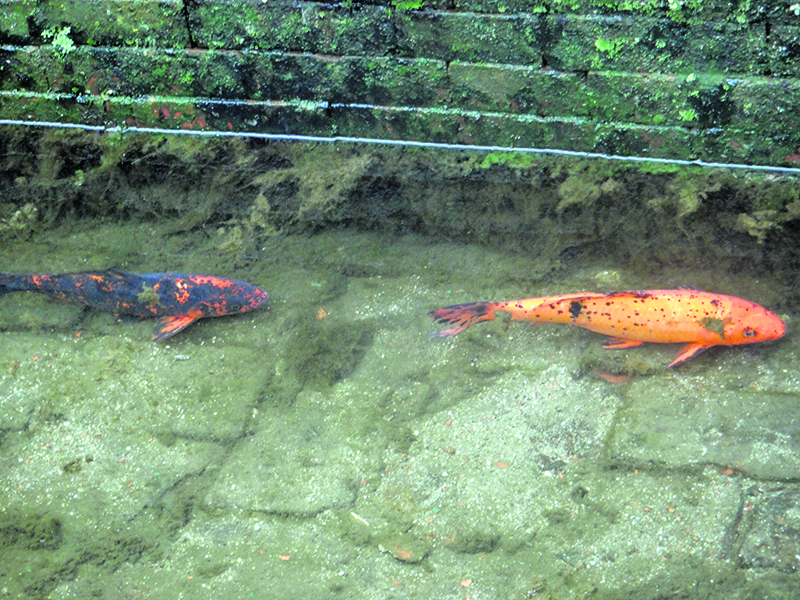'Ramailo Games' promotes local content and family games
1 year ago
Sr. correspondent at Republica.

Hundreds of hitis or dhunge dharas (stone water spouts) are spread around the Kathmandu Valley. According to the research done by Dr Sandhya Khanal (Parajuli), lecturer at Central Department of Nepali History, Culture and Archaeology (NeHCA) at Tribhuvan University, there were 204 hitis in Kathmandu, 63 in Patan and 97 in Bhaktapur in 2073 BS.
With the increasing population and unmanaged urbanization, these important cultural sites are being encroached or left uncared. Only a countable number of hitis have been maintained and are still serving their purpose.
One such maintained hiti is Pakkuhiti located at Naxal. It has colorful fishes swimming around in the clear water just beneath the stone tap. Moreover, this stone tap is decorated with stone sculptures of Shiva Linga, Shreedhar Bishnu, Umamaheswhor and monolithic chaityas, among others. The features inscribed in these idols and structures are the evidences that Pakkuhiti existed even before the Lichhavi period.
Prof Dr Sabitree Mainali, head of Central Department of NeHCA at TU, informed, “The bluish-black polish found on these structures and the way the artisans have followed the rule book of stone carving prove that this Pakkuhiti was built in the Lichhavi period.”
According to her, the bluish-black polish coat was made using powdered green lintel among other unknown chemicals as they were used only during the Lichhavi period.
Besides Pakkuhiti, there are scores of historical architectures and structures like stone taps, temples, inscriptions and idols of gods and goddesses around the Maligaun-Hadigaun area (Narayanhiti Marg, Lazimpat, Naag Pokhari, Naxal, Gairidhara and Dhumbarahi).
There are chances that Hadigaun and its surroundings were the capital city of Lichhavi period having Kailaskut Bhawan built by Lichhavi King Amshuverma as well as Manghriha built by King Mandev. And to prove whether this hypothesis is a reality, intense research and excavation of the area is required.
According to Associate Professor at NeHCA, Dr Madan K Rimal, Maligaun-Hadigaun could have been a significant area during the Lichhavi period. He explained, “There are many potential historic sites at Maligaun-Hadigaun area, where proper research and excavation is required. Rigorous research can help in proving or disproving the above mentioned hypothesis. However, a Chinese traveler Hiuen Tsang has mentioned in his travel account that Kailaskut Bhawan, one of the most spectacular palaces during the regime of then King Amshuverma, used to be somewhere at Maligaun-Hadigaun area.
Moreover, the presence of various archeological sources such as the Maanmaneshwor Temple, inscription by Amshuverma at Gairidhara and two inscriptions at Hadigaun that mention the administrative rules and regulation during his period are strong attestations that with proper research and excavation around Maligaun-Hadigaun area, one can confirm that Maangriha and Kailashkut Bhawan were located in the area.”
Maligaun-Hadigaun area consists of various important cultural and archeological sites such as Naag Pokhari, Naxal Bhagawati, Nil Saraswoti, Harihar Mandir, Maanmaneshwor Temple and Nil Barahi, among others. These archeological sites hold immense possibility to develop cultural tourism and enhance economical status of the area.
Talking about the excavation and research at Maligaun-Hadigaun area, Ram Bahadur Kunwar spokesperson of the Department of Archeology under the Ministry of Culture, Tourism and Civil Aviation, shared, “It is true that Maligaun-Hadigaun area is a significant site for excavation and research to dig out history. But there is no proof to back up the hypothesis of Maligaun-Hadigaun area being the actual place that used to house Maangriha and Kailashkut Bhawan. The excavation has not been possible as of yet because the area is densely populated.”
According to him, the department is doing research and excavation of important archeological sites and it is not that the DoA is being irresponsible. He added, “There are certain things that the department needs to consider before conducting research and excavation. Researchers should have a complete historical knowledge of the site, understand its current situation and the time limitation. Similarly, willingness for participation on the part of locals is also equally important to conduct research and excavation. Only then, the DoA can allocate an appropriate budget for the task.”
Moreover, the DoA will take care of cultural structures that are 100 years old and unkempt personal artifacts that have historical significance. “Even if the locals find some archeological evidence in Maligaun-Hadigaun area, they tend to hide it in order to avoid legal hassles. The government’s policies in regard to archeological sites are also weak as compared to developed nations,” said Dr Khanal (Parajuli).
Nevertheless, all experts come to a unanimous conclusion that Maligaun-Hadigaun area has the potential to be developed as a cultural tourism hub if a proper route is carved, ending the religious tour in Pashupatinath.


Leave A Comment